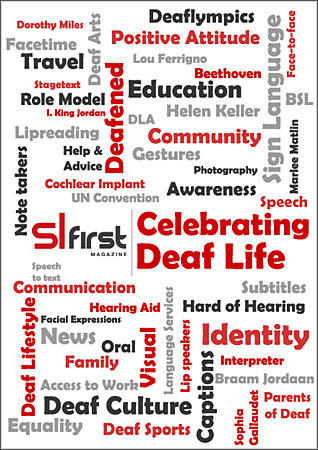Stage, Theatre & TV3rd December 2014
RSC Stage First Performance With BSL
Royal Shakespeare Company get set to host its first semi-integrated Sign Language Performance.
 ROYAL SHAKESPEARE COMPANY ANNOUNCES FIRST SEMI-INTEGRATED BRITISH SIGN LANGUAGE PERFORMANCE AND CONTINUES ITS COMMITMENT TO RELAXED PERFORMANCES
ROYAL SHAKESPEARE COMPANY ANNOUNCES FIRST SEMI-INTEGRATED BRITISH SIGN LANGUAGE PERFORMANCE AND CONTINUES ITS COMMITMENT TO RELAXED PERFORMANCES
The Royal Shakespeare Company will host its first semi-integrated British Sign Language performance on 5 January at 7.15pm of Phil Porter’s The Christmas Truce. The production is inspired by the incredible true Christmas story from 1914, when soldiers along the Western Front left their trenches on Christmas Eve to meet their enemies in No Man’s Land to talk, exchange gifts and play football. Directed by RSC Deputy Artistic Director, Erica Whyman, the show is suitable for ages nine plus and runs until 31 January 2015 in the Royal Shakespeare Theatre.

Erica Whyman said: “We are always looking for ways to offer as many people as possible access to our work and this is a fantastic way to bring it alive. Caroline, the sign language interpreter, will be close up with the actors in the thick of the action dressed as a nurse. We hope that this will offer all of our audiences a better experience, and for those people whose first language is British Sign Language a more equal opportunity to enjoy this story.”
 The RSC also continues its commitment to relaxed performances on 29 January at 1.15pm with the special showing of The Christmas Truce. The RSC was amongst the first to adopt relaxed performances in January 2013 and previous shows include The Mouse and His Child, Wendy & Peter Pan and Matilda The Musical. Children and young people with autism, learning disabilities and sensory and communication disorders, or anyone who would benefit from a more relaxed environment is welcome.
The RSC also continues its commitment to relaxed performances on 29 January at 1.15pm with the special showing of The Christmas Truce. The RSC was amongst the first to adopt relaxed performances in January 2013 and previous shows include The Mouse and His Child, Wendy & Peter Pan and Matilda The Musical. Children and young people with autism, learning disabilities and sensory and communication disorders, or anyone who would benefit from a more relaxed environment is welcome.

The shows are a fantastic way to offer families the chance to experience theatre together and the audience benefit from an environment where the performance is adjusted to reduce anxiety or stress. For example, changes are made to sound and lighting to limit surprises and soften their impact. There is a relaxed attitude to noise and moving around the auditorium during the performance and a designated ‘chill-out’ area for people to use if being in the auditorium becomes overwhelming. Theatre-goers also receive a visual story to help prepare them for the show.

Article by Sarah Lawrence
posted in Entertainment / Stage, Theatre & TV
3rd December 2014





